Succulents make the best houseplants for beginners and experts because of their distinct leaf shapes and striking features. They can also survive under various environmental conditions and are low-maintenance plants. In this article, let’s discuss do succulents attract spiders.
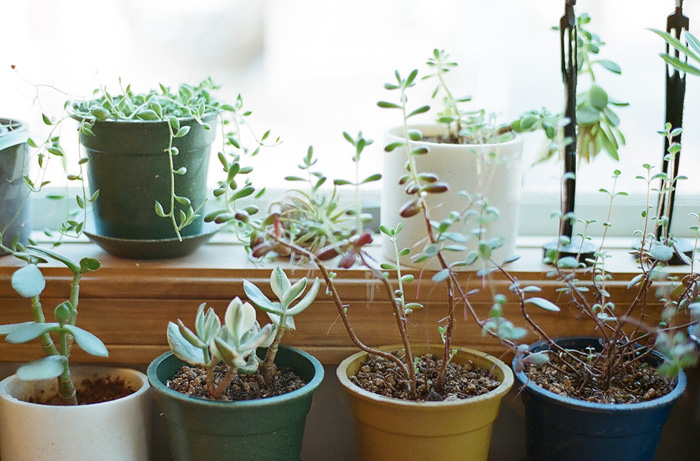
Succulents as indoor plants to enhance the aesthetics of the interior atmosphere
Due to their hardy nature, succulent plants are disease and insect pests-free. However, succulents attract bugs when these hardy plants are in poor growing conditions. The most common insect pests are aphids, spider mites, mealy bugs, whiteflies, and scales.
Similarly, succulents attract spiders because of their unique texture, and thick leaves offer them hiding places for protection from predators. Also, provide them with food and hydration. If these indoor plants are left unchecked, spiders form webs around the base of the succulents and between their leaves.
In this article, we’ll learn whether succulents attract spiders and how we can eliminate them in natural and other chemical ways.
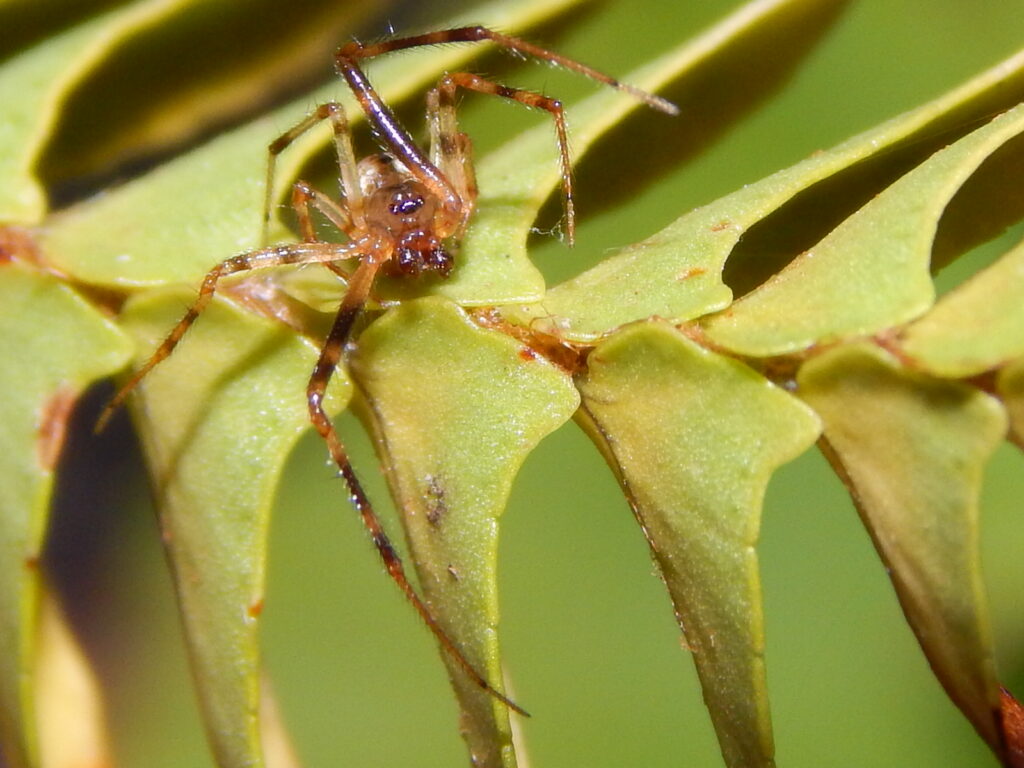
Spider on indoor succulent plants
Do Succulents Attract Spiders?
Yes, succulents attract spiders because these plants protect them from predators. Spiders hide in between the thick leaves of succulents. The distinctive structure and thick forms of succulents lead to spiders making nests and breeding in them.
Also, spiders drink water that gathers between the leaves of succulents. Succulents that are tall with lots of leaves will have too many spiders and their webbing on top and around the plant parts.
RELATED: Do Succulents Attract Bugs? Plus Best Home Remedies on How to Prevent Them?
Do Spiders Lay Eggs in Plants?
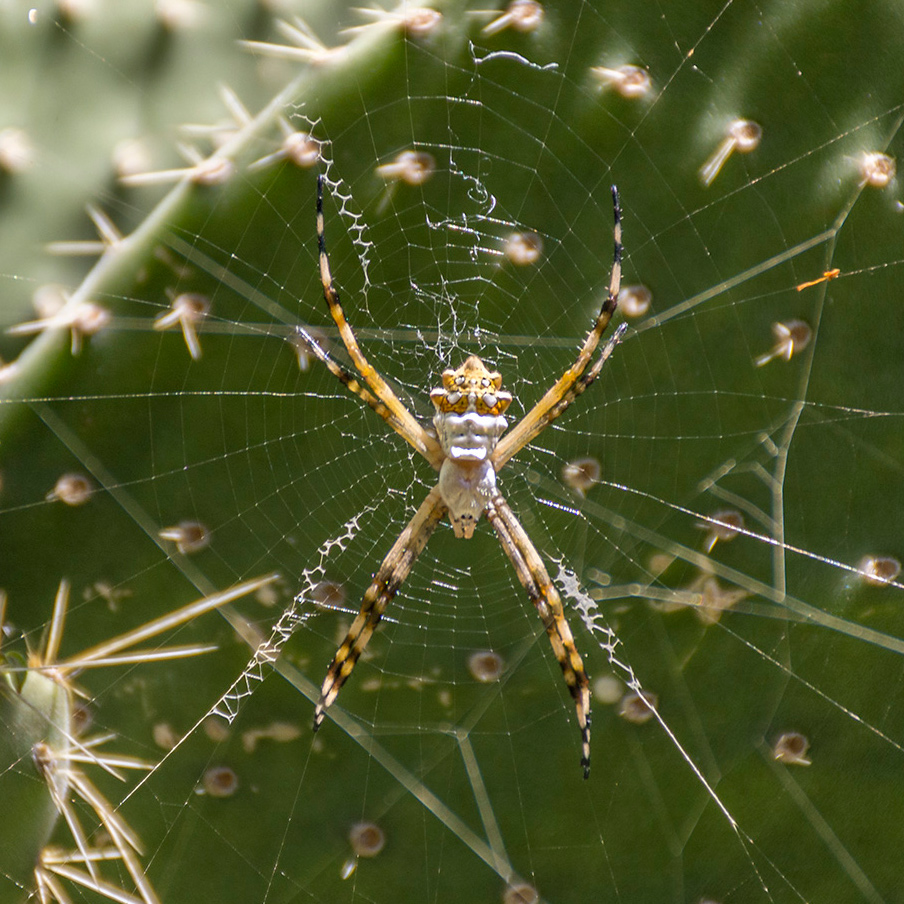
Spiders with its web and trapped food in it
Spiders infest succulents to only hide from predators, but they lay eggs in the consistently moist soil of the garden plants with stable temperatures. These eggs scavenge soil nutrients and moisture and deprive plants of food until they hatch into many young.
Are Spiders Harmful to Succulents?
Spiders are harmless to succulents and only come to these plants for nesting, hydration, and protection from predators (animals devour spiders). However, they can dehydrate the succulents as spiders drink lots of water for plants.
On the other hand, the spider mite feeds on the juicy and hardy leaves of succulents and lays eggs in potting mix and garden soil. Within five days, these mites complete their life cycle from eggs to the adult stage.
How do I know if I have spider mites or spiders?
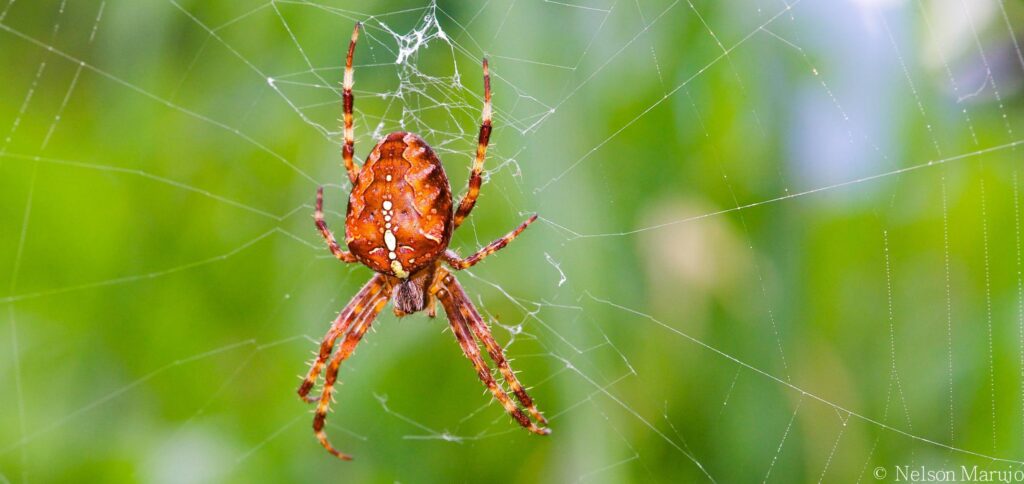
A garden spider web on the plant to capture its prey
Garden spiders make their delicate webs on tall plants or branches to capture other insects. These webs appear in layers and only to ambush the prey, mainly on the top of plants.
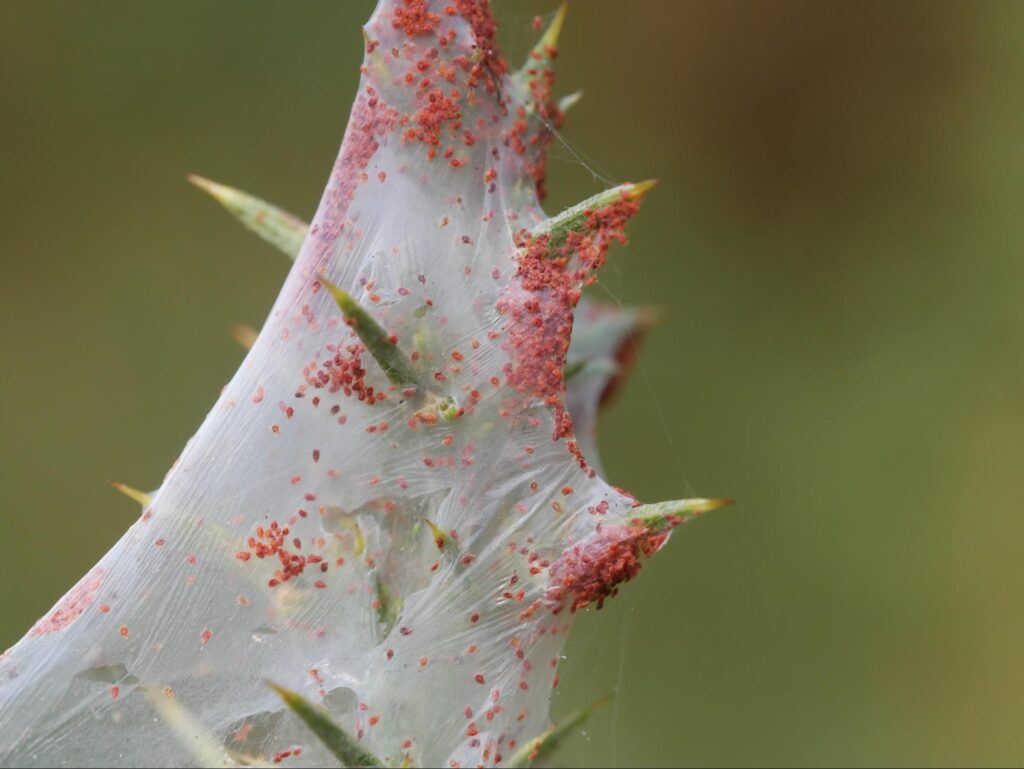
Spider mite webbing
On the other hand, spider mites can infest the entire plant and web only in heavy infestations. They form a sticky and delicate web that covers the full foliage, flowers, and stems (unlike spiders). They are primarily on the underside of leaves, and tiny dots appear on the web, mites.
RELATED: Do Succulents Attract Flies? Plus, How to Knock Them Off on Succulents?
How Do I Keep Spiders off My Plants?
Though spiders do not cause much harm to succulents, their heavy numbers can drink the moisture of your potted plants. Their infestations also alarm the houseplant owners of the other insect’s presence, such as cockroaches, moths, flies, and mosquitoes. So, early detection and management practices will ensure protection from spiders and other pests.
The following are the best practices to control spiders and the spider mite:
Use Organic Pesticides to Kill Spiders and Mites
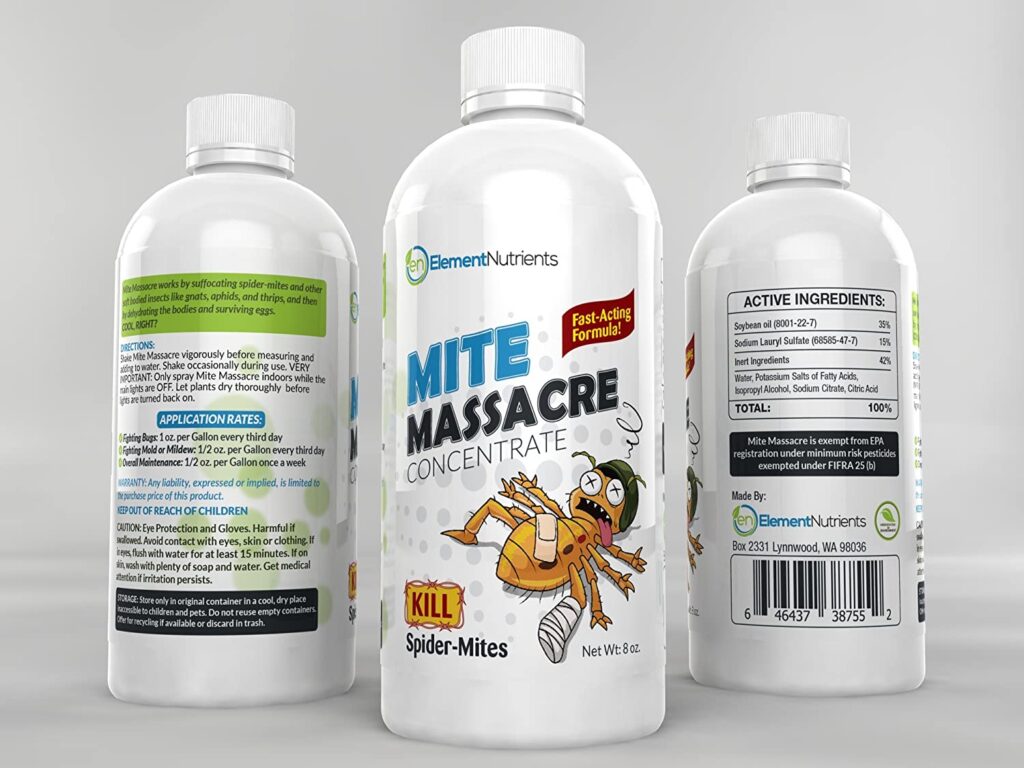
Spider mites and other bugs killer
Neem oil (a natural pesticide) and Mite Massacre 8-ounce Spider Mite Killer is the best spray to eliminate spiders and mites. In addition, these are effective against other insects, such as whiteflies, aphids, scales, and fungal infections. Make sure to apply the sprays in the early morning or evening when the beneficial insects are not active. After application, monitor succulents regularly.
Use Rubbing Alcohol to Deter Spiders and Mites
The application of rubbing alcohol solutions kills the mites and other bugs. It also makes the succulents inhabitable for spiders and helps in their control.
Dust off the Succulents and Spider Webs
Wash the cobwebs and spider webs through a garden hose or use wet clothes to wipe off the dust particles. This way, succulents will look neat and attract beneficial insects rather than pests.
Use Soap Water Spray to Keep the Spiders Away
Mix five parts of water per one part of the liquid dish soap in a container. Pour the mixture into the spray bottle and sprinkle over the plant to keep the spiders and other bugs away.
RELATED: Pests in Succulents and How to Get Rid of Them by Chemical & Natural Ways?
Practical Tips to Keep Away the Infestation at the First Stage
To keep the bugs away:
- Remove the weak and infested plant parts and discard them properly (remember not to put them in the compost pile to avoid soil contaminations.
- Keep your succulents healthy and robust to combat the bugs and spiders on their own.
- After one or two years, repot your succulents to give them a new start with a fresh potting soil mix.
- Keep the soil dry between each watering; because moist soil attracts spiders, flies, and fungus gnats.
- Regular check your succulents for spiders, mites, and fungus gnats and isolate the infested plant.
- Keep the immediate places of indoor succulent gardens clean and leaf litter free. Otherwise, the harmful bugs will hide in the trash and lay eggs.
Keep the Beneficial Insects in Balanced Numbers
Introduce the natural predators of spider mites to indoor spaces, such as green lacewings, lady beetles, and mantis. These beneficial insects will hunt down the mites and prevent succulents from webbing and bronzing (foliage appears bronze due to heavy infestations of mites).
Use Cinnamon to Repel Spiders and Kill Mite Infestations
Use Ceylon Cinnamon leaf oil to make the spiders move out from your succulents. The strong fragrance of cinnamon acts as an excellent insect and spider repellant. Mix one part of cinnamon oil per ten parts of water and regularly sprinkle over plants to repel the spiders and also black ants.
FAQs
What Plants do not Attract Spider Mites?
Plants that repel the spider mites are Chinese parsley, rosemary, chrysanthemum, dill, garlic, leeks, lemongrass, thyme, cinnamon, and peppermint. These plants help organic gardeners through companion plantings to repel spider mites during the spring and summer seasons.
Why does my Succulent have little Bugs?
Although succulents are disease and pest-free plants; however, they may get bug infestations in the summer. These little bugs can be spider mites, fungus gnats, mealybugs, and scale insects that will infest and feed on your succulents.
What Does A Spider Mite Look like?
Spider mites are the tiniest creatures (1/20 inch long), only visible through a magnifying glass. While on infested plant parts, they create small pale yellow dots on the upper side of leaves and fine webbing on the underside. Under a hand lens, spider mites appear as yellow or red oval-shaped insects, and to the naked eye, they look like dots of red or yellow color.
During growing seasons, spider mites eat on various host plants and reproduce quickly. Therefore, early detection of mites ensures the vigorous growth of spring and summer garden plants.
How To Spot A Spider Mite Infestation On Succulent Plants?
One visible sign of spider mite infestations is the development of tiny white or pale yellow spots on the tips of leaves. It also includes the fine webbing on or around the leaves and stems.
Do Some Plants Attract Spiders?
Spiders are attracted to those plants that provide them with hiding places. The plants in improper light conditions will also attract spiders. Even plants in the dark give the spiders enough space to create nests and reproduce.
Similarly, the bright yellow flower of the sunflower attracts spiders and other pests upon which spiders feed.
Why Are There Ants All Over My Succulents?
The presence of ants around your succulents indicates that your succulents are under attack by aphids, whiteflies, mealybugs, and scale insects. These sap-sucking pests feed on plant juices and secrete sticky substances known as honeydew. In addition, it supports the growth of black ants and sooty mold fungus.
What Houseplants Do Not Attract Bugs?
These are the best houseplants that not only enhance the beauty of indoor environments but also repel the bugs, such as:
- Snake plant (Sansevieria trifasciata)
- Jade plant (Crassula)
- Cast iron palm (Aspidistra elatior)
- Madagascar dragon tree
- Chinese evergreen
What Environment Do Spider Mites Hate?
Spider mites thrive in warm, dry, and extreme heat conditions and hate moisture. So, the spider mites can be controlled by creating an environment of high humidity to kill them.
Are Succulents Susceptible To Spider Mites?
Spider mite infestations on succulents are the worst, as they suck out the stored nutrients from the thick leaves of succulents and turn them into yellow with brown tips.
Do Succulents Attract Cockroaches?
Your potted plants’ moist, rich soil will attract cockroaches and flies. So, to avoid their infestations, check your indoor succulent plants regularly and watering routine. Do not overwater your succulents and allow the drying of soil for the next water application.
Is Cinnamon Good For Succulents?
Cinnamon has excellent benefits for succulents. It acts as an insect repellant and has fungicidal properties. Cinnamon powder is beneficial for succulents. In spring and summer, spread the cinnamon powder near the plant base to repel gnat flies and other bugs.
How Do Houseplants Get Spider Mites?
Spider mites are the most common insect pest of indoor houseplants and other plants. The warm and humid indoor environments favor mite infestations. Moreover, the water stress also leads to the spider mite attack, and their feeding damage includes chlorotic lesions (due to chlorophyll damage) on both sides of the leaves.
Sources For Further Reading
- Managing Spider Mites on Houseplants. (n.d.-b). UMN Extension. Retrieved August 1, 2022, from https://extension.umn.edu/news/managing-spider-mites-houseplants
- Pennisi, S. V. (2008, February 1). Gardening in Containers Using Tropical Plants. University of Georgia Extension. Retrieved August 2, 2022, from https://extension.uga.edu/publications/detail.html?number=B1318
- Barrett, B. A. (n.d.-b). Aphids, Scales and Mites on Home Garden and Landscape Plants. University of Missouri. Retrieved August 1, 2022, from https://extension.missouri.edu/publications/g7274
Editor’s Recommendations
19 Heart Touching and Joyful Korean Succulents for Gardens
30 Vibrant Types of Red Succulents for Indoor and Outdoor Gardens







